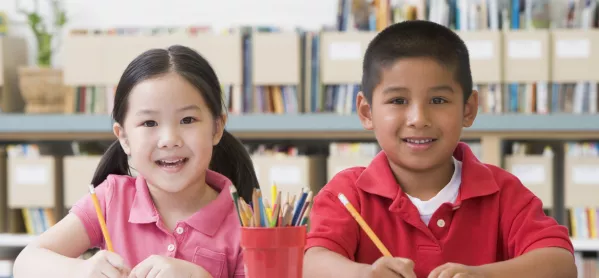Enhancing our children’s enjoyment in, and engagement with, their writing is no mean feat.
Every time a child picks up a pencil and begins to write they are having to juggle several skills simultaneously: their ability to organise a text, their use of language, their application of grammar from basic to complex, not to mention handwriting and consideration of spelling rules. As a consequence, improving attainment in writing for all groups of children can prove a constant challenge, particularly those with special educational needs and disability (SEND).
Like many schools, we have long recognised the benefits of mixed-attainment classes and teach English without sets. Within this framework, I have been exploring how to maximise the impact of collaborative learning and believe paired writing has a significant part to play.
Paired writing approaches
Paired writing can take a variety of forms, from working as ‘prove it’ partners, to collaborating on particular stages in the writing journey, all the way to producing a shared written outcome.
Embarking on the writing process together immerses all children in the types of high-quality discussions that inspire improved outcomes. Partners can experience how to experiment together with language, grammar and word order to achieve the best effects. It also means those at lower current attainment levels can be exposed to enhanced vocabulary and a wider bank of ideas for writing.
What are the essential elements necessary to make paired writing a success?
Here are five points I believe are crucial:
1. Children should be explicitly taught how to act as ‘critical friends’
This is the foundation of making the process a success. We need to model how to discuss the learning, how to work together effectively and set up clear structures (e.g. question prompts, scaffolds) to give children the skills to provide appropriate support and challenge to their peers.
2. Partners need to be carefully chosen and regularly changed
To have maximum impact on all learners, a variety of groupings need to be used regularly. As teachers, we need to ensure that we are clear of the desired outcome of the paired opportunity. For example, exposing a less confident writer to the higher-quality vocabulary of a more confident writer; or pairing a low current attainer with a partner working within age-related expectations when we wish them to be searching for proof of success in each other’s work.
3. Opportunities must still be provided for independent writing
Independent writing is important and still very much has its place. Over the week or unit of writing, children need opportunities to demonstrate their skills and the teacher needs the chance to observe/assess individual understanding and the impact of partner work.
4. A ‘help desk’ can be used to provide support or challenge for those who need it
Working alongside children as they write can be highly informative and teachers should use the opportunity to model writing skills, for example, editing for sense, talk for writing, scaffolding with colour-coded grammar. You can do this by setting up a table in the corner for yourself that you call the ‘help desk’. It can be invitation-only (i.e. children selected from the previous day’s AfL), but also works well when open-to-all, as partners can come and be supported to develop their skills to write together.
5. Success criteria must be clear and accessible to all
In order to support each other in developing and improving writing, the children need a shared understanding of the success criteria. A good rule of thumb is to ensure the first success criteria at the Must or I can level is carefully chosen to be accessible to all learners in your classroom.
Zara Chambers is lead practioner for learning at Hiltingbury Junior School in Hampshire
